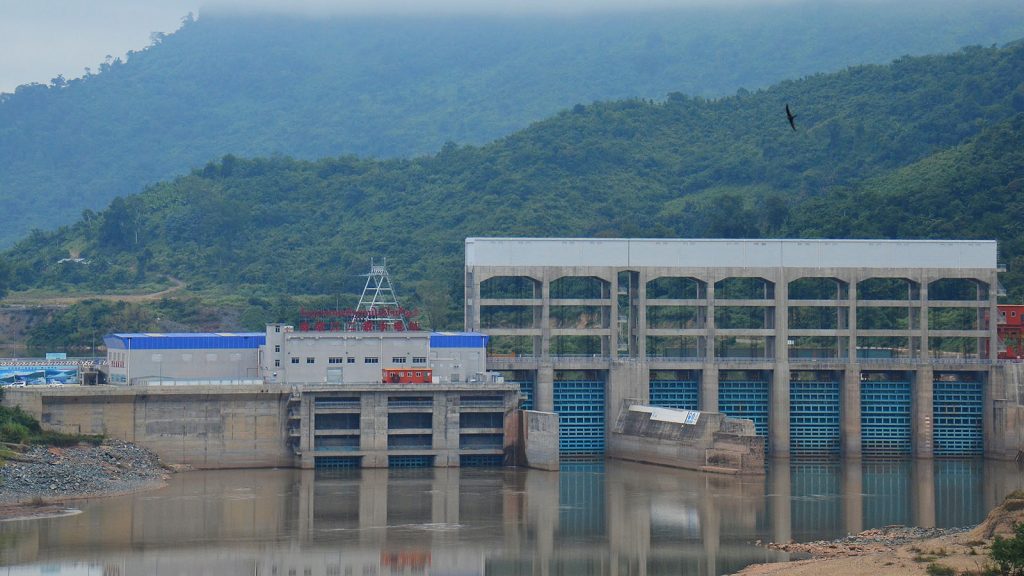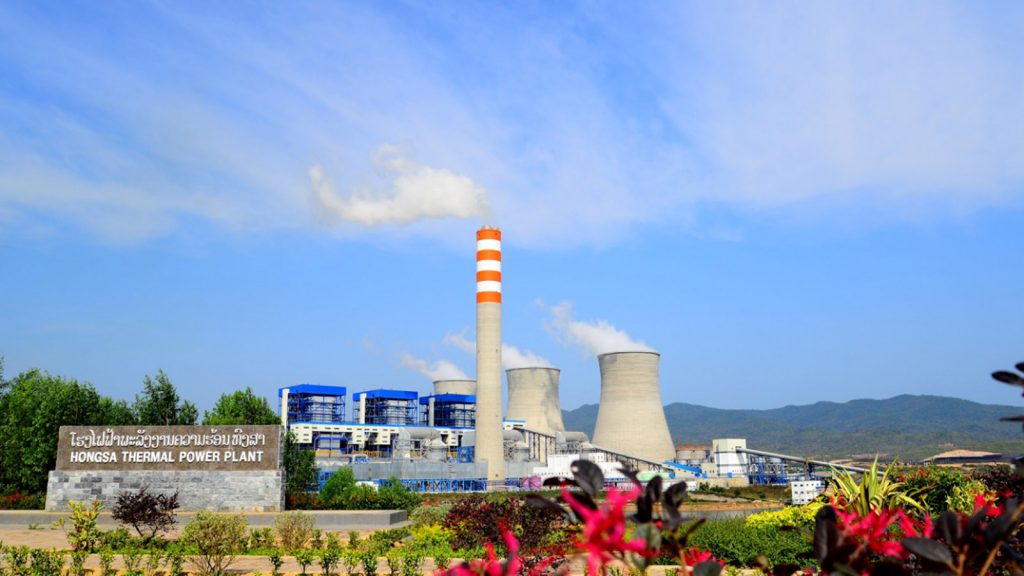4 August
By Khin Maung Myint

Before proceeding further, I would like to make one thing very clear. I am neither a political activist nor a lobbyist nor an advocate for any social or government organization. I am, but an ordinary dutiful citizen, who wish to see my country develop and prosper. Thus I had been writing articles as a freelance writer to discuss matters that would contribute to the well beings of the people and the country. In doing so, I have no prejudice or bias, but only good intentions — to clear all obstacles that hinder the progress and prosperity of our country.
About a decade or so ago, readers may remember the incident where a consortium of Chinese and Thai companies planned to implement a project to build hydro-power dams over the Salween River in our territory. They met with stiff oppositions from the locals led by a young activist, who was later invited to the USA and was conferred an award making him an instant hero of sort. If I remember correctly he was even invited to the congress to honor him.
That project was abandoned when some engineers who were doing the survey works were abducted for ransoms. In my opinion, that project was abandoned due to security reasons and not because of the protests. Anyway the leader of that protest became famous as the champion of environmental conservation. The US spotlighted him to fame undeservedly.
Also, a few years back, when a coal-fired power station was planned to be installed in the Dawei region, it met with protests and was abandoned. Then there was the protest at Patheingyi Township opposing the construction of a factory that will incorporate a coal-fired power plant. There may be some other instances, but these two examples would be enough to express my opinion concerning the coal powered plants.
Today the coal-fired power plants are becoming safer than in the past. Our neighbour, Laos has three hydro power dams built on the section of the Mekong River inside their territory. But still, they constructed some coal-fired power plants to supplement their electricity exports to Thailand. All those projects never met with much opposition as in our country.
Hope the above stated facts would suffice as a prelude to what I will be discussing. First, it will be about the dams. Before building a dam thorough Environmental Impact Assessments (EIA) have to be carried out by experts. Such studies or assessments could take years to avoid adverse consequences. Here, please allow me to mention a royally initiated multipurpose dam built in Thailand. It is one of the two largest dams in that country. The surveys, studies and environmental impact assessments took over twenty years before the implementation of that project was commissioned in 2011 by the late Thai Monarch — King Bhumibol Adulyadej, Rama IX.
I was very familiar with that dam as my son, a water resources engineer, was one of the three project engineers who undertook its constructions. I had visited that project twice a year since the start of that project in 2011 until its completion in 2017. Right from the start there were protests by the villagers whose properties will end up inside the catchment area and have to evacuate. Though the government compensated them lavishly for their homes and crops, some troublemakers from outside instigated the villagers to ask for more. Though most of the villagers willingly took the compensations and moved out, some stubborn ones continued protesting. In their case they don’t cite environmental impact as their cause, but they demanded for more compensations.
A small group of protesters numbering about twenty households, built shanty huts across the road from the project site office of the Royal Thai Irrigation Department in a show of defiance and continued their protest. The authorities tried to reason with them, but without any agreement reached. During that period, while some were trenched-in for a long term protest new villages sprung up overnight in the vicinity of the dam away from the catchment area. On enquiring, I learned that they were the villagers who agreed to move out by taking the compensations. All the houses are large, modern in design and pucca buildings. I noticed that every household have brand new four wheel drive, four doors pick up trucks parked under their porticoes. It was a vast improvement in their living standards as their old homes were mostly rundown timber structures and their cars were beat-up old two doors pickups.
The protesting group was left untouched until the project was completed and just before the commissioning ceremony of the dam and the reservoir that was to be graced by the new King — Rama X, they were evicted by force. It is learnt that according to the Thai laws, whenever they requisitioned the lands and properties the government compensate them their worth. If they declined to take they were never forced right away, but the authorities would remit their entitled amounts in a bank in their names, which they are free to draw, once they moved out. However, after certain period if they are still obstinate the government will raze their land to continue with the construction and the money in the bank will be withdrawn by the authorities, depriving them of the compensations.
Though I am not an engineer by profession, as I had been to seven such project sites where my son worked, I am quite familiar with the workings of the dams. Every dam has to incorporate a fish ladder to afford access for the fishes to migrate upstream to spawn. Thus there is no danger of depletion or extinction of the fish populations as most activists in our country who opposed the dam constructions claimed. Also, as a dam has to release water periodically (the hydro power dams release continuously), the force of the water head pressure is so great that it flushes away the silts. Thus there is no danger of rivers sedimentation or drying up and eventually disappearing. Also the dams will not impede the river traffic, a fact which is proven by the Three Gorges Dam on the Yangtze River in China, where a diversion canal was dug for the river crafts to by-pass the dam..
As further proofs that the dams do not have serious effects on the rivers and the environments, I would like to mention some dams built on some major rivers around the world, I had already mentioned about the three dams on the Mekong River in Laos. The Mekong River originates on the Tibetan Himalayan plateau in China and meanders through China, Myanmar, Laos, Thailand, Cambodia and Viet Nam. Thus, all the six countries along its path can claim the right to it. Apart from the three dams in Laos, there are seven more dams inside China built on that river. We had never heard any country down stream objecting those dams or they are causing any significant adverse effects on the environments or the ecosystems in the countries along its path. The Mekong is still flowing on.
Another example is the Nile River in Africa. Like Mekong, it flows through many countries, thus all those countries can say it belongs to them too. Today, there are three hydro power dams built in Ethiopia on the Blue Nile, which is one of the tributaries that flows through Sudan and fed the main River Nile that passes through Egypt where there is also a large dam built across it before emptying into the Mediterranean Sea. Likewise, there are dams on the other tributaries of the Nile in other countries. There wasn’t any report of serious protests or objections there.
There are many more examples, which prove that, in reality there is no serious environmental impact or adverse effect on the ecosystem as claimed by the environmentalists. If there were, there would be protests or even conflicts between the countries along the Mekong and the Nile, which we will be aware of. But there was none. In my opinion, even if there should be some impacts on the rivers caused by the dams, they would be much less damaging than those caused by deforestations, which our activists never ever seriously or loudly protested.
As far as the coal-fired power plants are concerned, China is said to be installing them at the rate of one plant a week to cope with the demand for electricity for their growing industries. If they are really detrimental to environment and health, though we abstain from building them ourselves, we will still be exposed to those dangers with such a large number of them being built in neighboring China and Laos. Just look how the smog from the Indonesian islands’ slash and burn agricultural practices affect Singapore.
As conclusion, I would like to mention the benefits from the Naruebodindrachinta Reservoir in Thailand, named in honor of the late Thai monarch who initiated its constructions. It is the dam where my son worked. Before the dam was built, the Prachimburi Province where it is located was subjected to severe flooding every monsoon season, which I had experienced many times myself. Today those were things of the past.
The fish populations too have vastly increased as the reservoir provides a large body of water for spawning and breeding. The villagers from far and near can freely catch fish to supplement their diets and incomes. The water from the canal systems of the reservoir provide ample water supply for agricultural purposes too. The dam also helps in deterring sea water entering the Bang Pakong River that flows into the Gulf of Thailand, by releasing the water from the reservoir to push back the rising sea water during high tides. This benefits the farmers along the river banks by keeping their agricultural fields salinity free. These are concrete proofs that if the EIA and the planning are thorough and transparent, the dams pose no threats, but are beneficial.
(Khin Maung Myint is a freelance writer, and the views and opinions expressed in this article are those of the author and do not necessarily represent or reflect the views of The Global New Light of Myanmar.)


